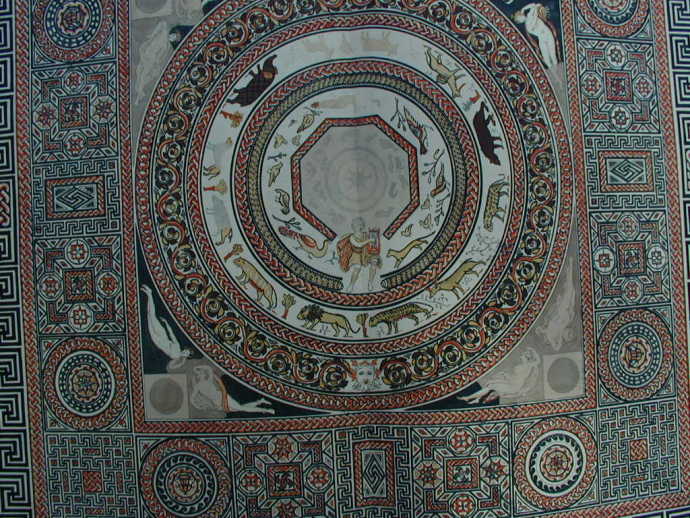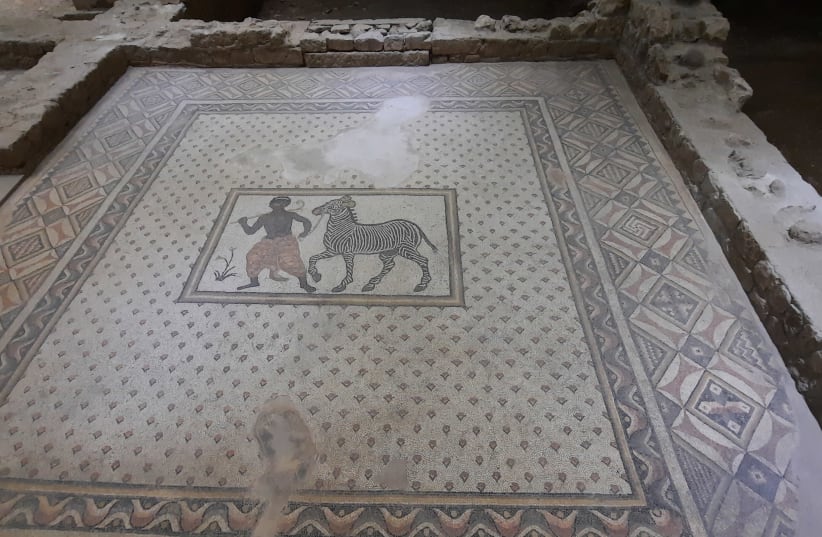An excavation in 1856 by Charles T. Newton and a re-excavation in 1990–93 by a joint Danish-Turkish team revealed several mosaic floors in a late-antique Greek villa from the fifth century CE, now called the House of Charidemos.
An international research team, led by Professor and expert in archaeometry, Kaare Lund Rasmussen from University of Southern Denmark, used chemical analysis to determine which elements objects were made of and how they have been processed.
The researchers' study was published in the peer reviewed journal Heritage Science, including archaeometric analysis of 19, approximately, 1600 years old mosaic tesserae.
Seven tesserae were made of opaque glass, eleven from various rock/lithic materials, while one of them was a ceramic fragment.
The nineteen tesserae from the floor have been analyzed by laser ablation inductively coupled plasma mass spectrometry, Raman micro-spectroscopy, scanning electron microscopy with energy dispersive X-ray analysis, and X-ray diffraction.


"I received 19 mosaic tesserae for analysis in my lab in Denmark. Of these, seven were of glass in different colors; purple, yellow, red, and deep red. My conclusion is that six of them are probably made of recycled glass," said Rasmussen.
Following the analysis, the research team has determined the concentrations of no less than 27 elements, some of them all the way down to a concentration of billionths of a gram.
The seven glass samples from the House of Charidemos show a composition quite typical of the late Antiquity soda-lime-silica glass, six of which likely included decolored recycled glass.
It seems that the base glass and the coloring agents identified are matching with what is already known in Anatolia for the late Roman–early Byzantine period. The use of Sb-bearing compounds reflects the continuity of the Roman tradition, but the presence of the deep red tessera KLR471 opacified with Sn also point at the use of new Byzantine glass recipes.
"We were able to distinguish between base glass from Egypt and base glass from the Middle East and also, we could determine which elements were added by the ancient craftsmen to color the glasses and to make them opaque, which was preferred at the time," Rasmussen explained.
"We were able to distinguish between base glass from Egypt and base glass from the Middle East and also, we could determine which elements were added by the ancient craftsmen to color the glasses and to make them opaque, which was preferred at the time."
Kaare Lund Rasmussen
Luxurious origins
The tesserae originate from an excavation of a villa from late antiquity, located in Halikarnassos, today's Bodrum in Anatolia, Turkey. Halikarnassos was famous for King Mausolus' giant and lavish tomb, which was considered one of the seven wonders of the world.
Mosaic flooring was a costly luxury, expensive raw materials like white, green, black, and other colors of marble had to be transported from distant quarries. Other stone materials, ceramics and glasses also had to be imported.
